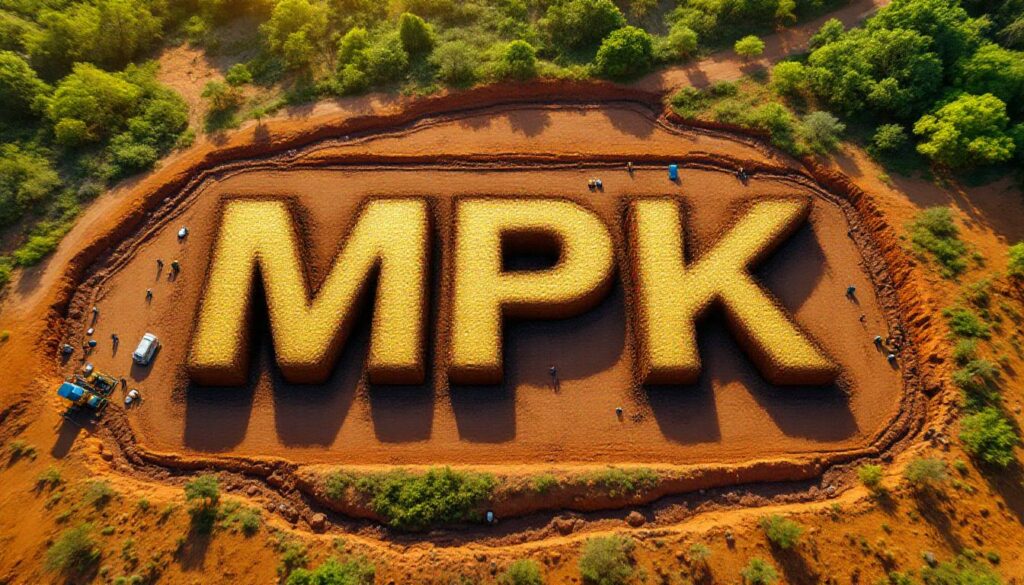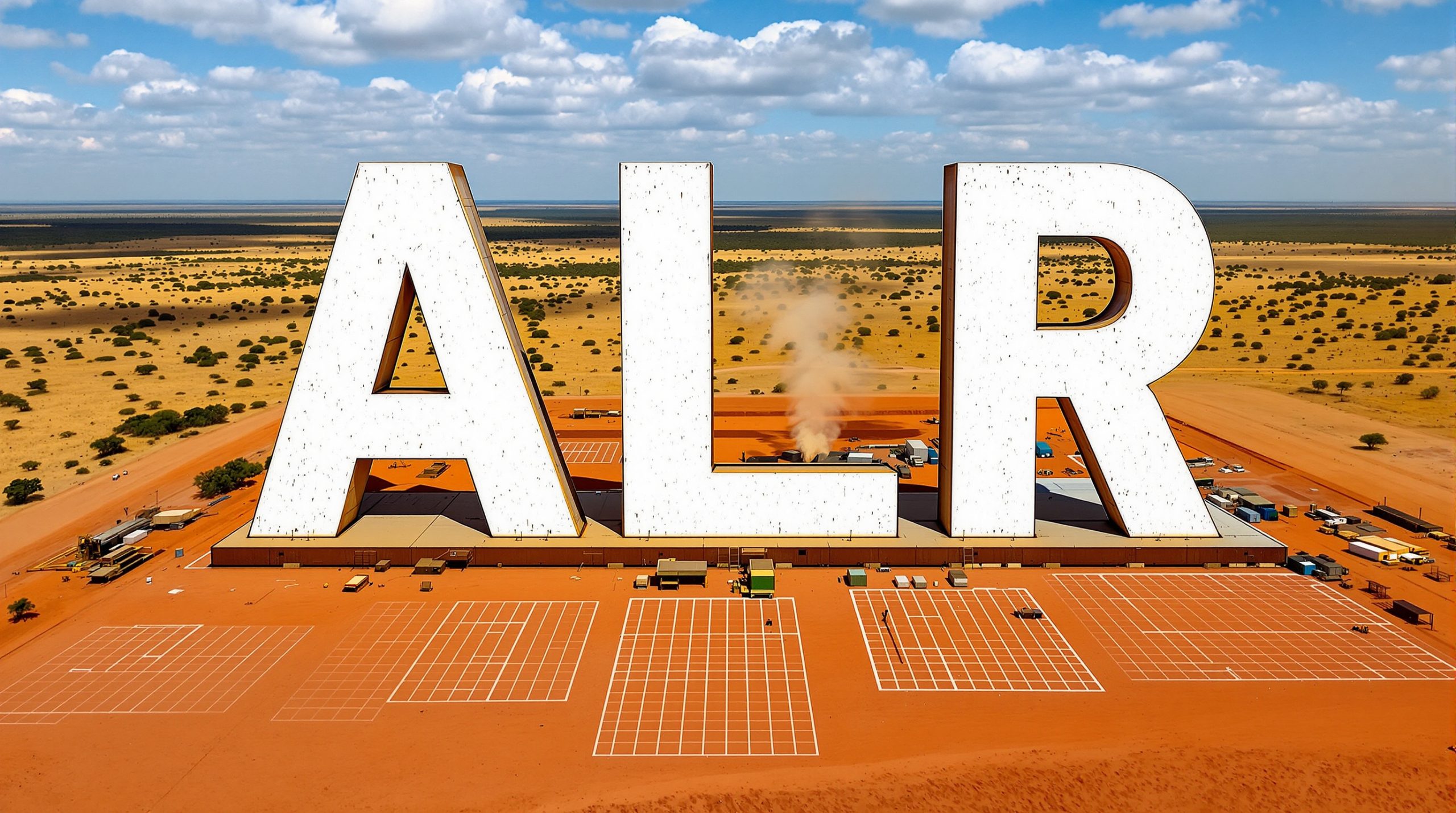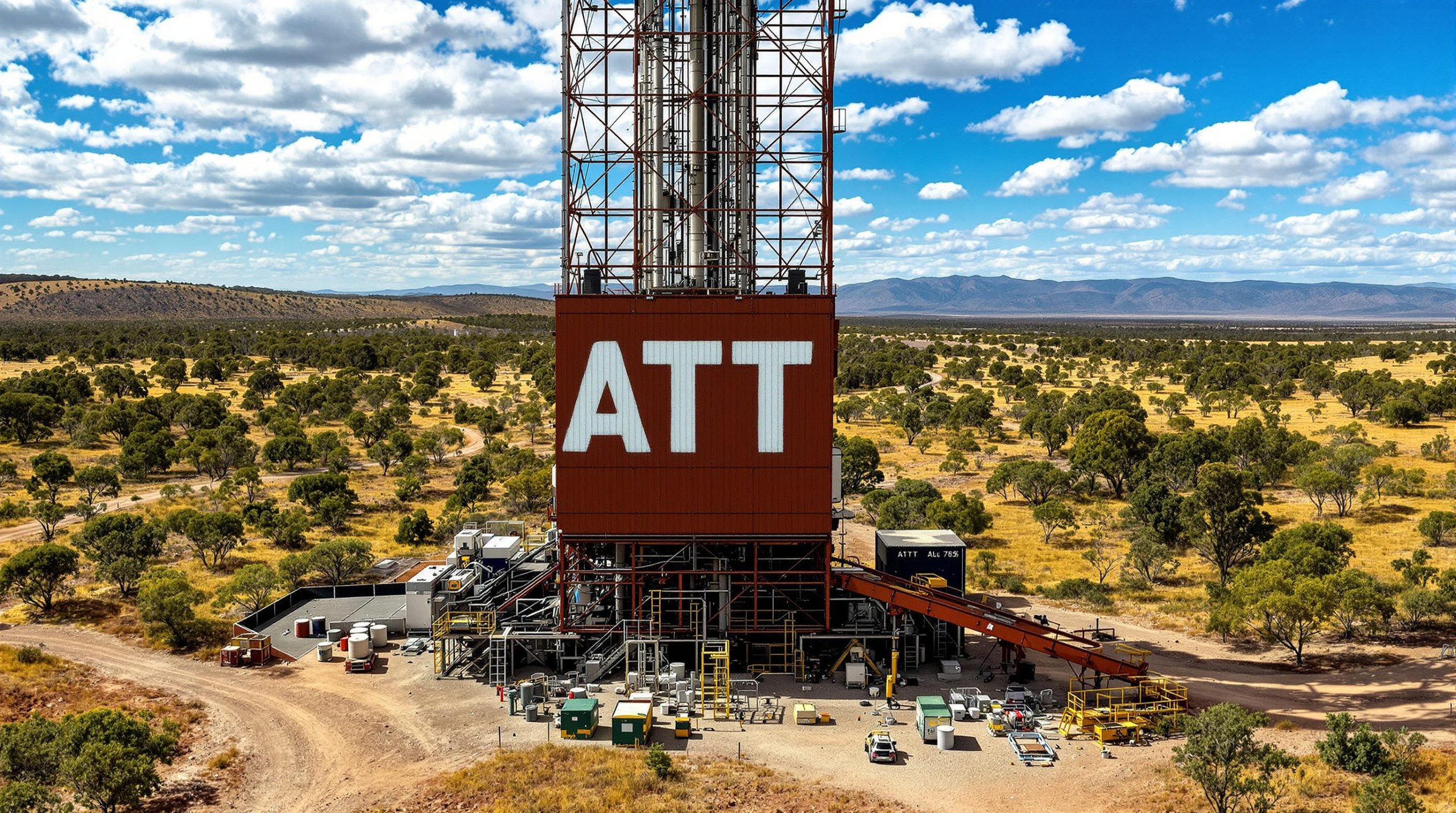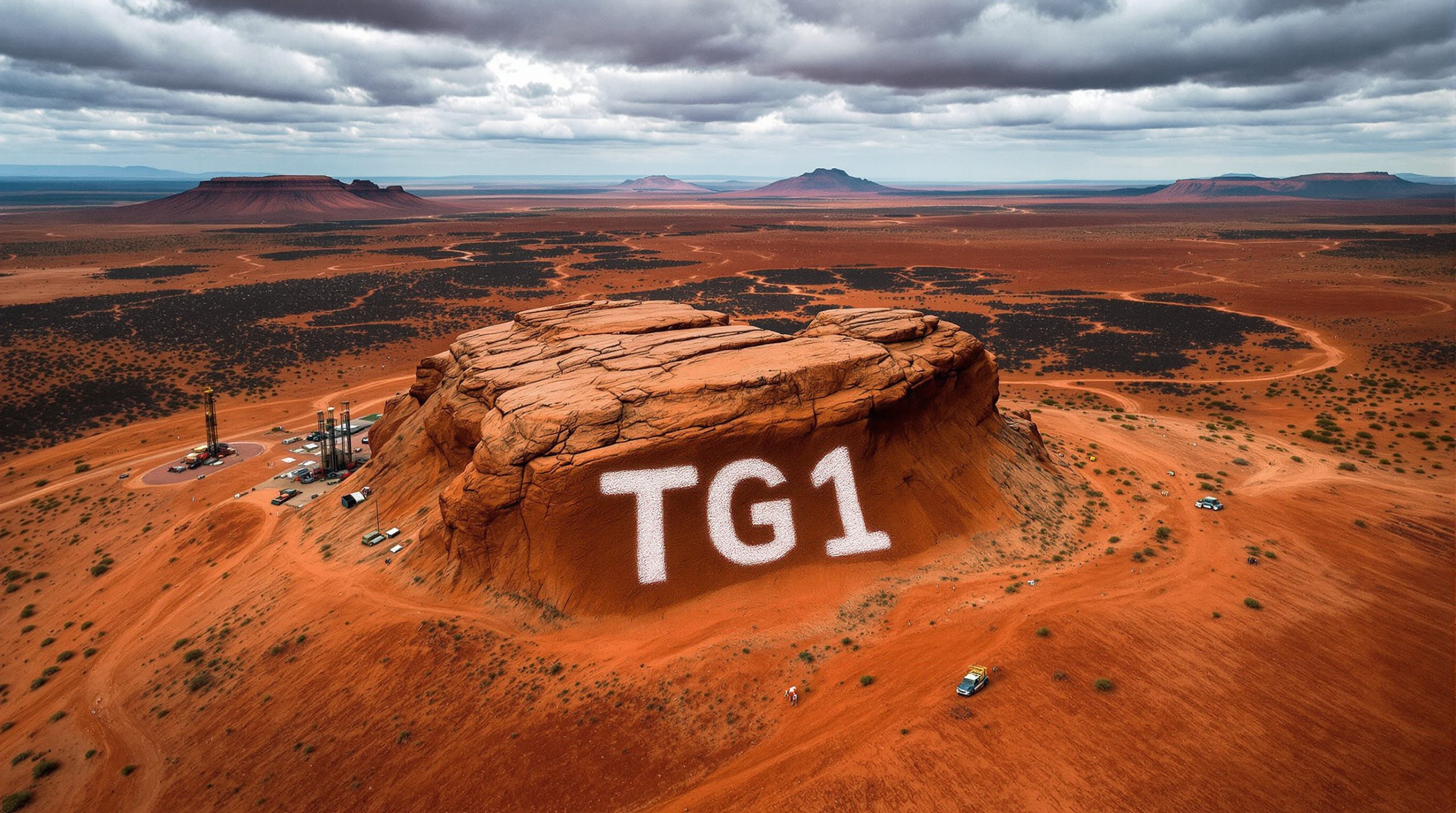Many Peaks Discovers Extensive Gold Mineralization at Ferké Project
Many Peaks Minerals Limited (ASX:MPK) has announced significant air core (AC) drilling results that confirm an extensive mineralized gold corridor at its Ferké Gold Project in Côte d'Ivoire, West Africa.
Wide-Ranging Gold Hits Across 9km Strike Length
Recent shallow reconnaissance drilling has intersected gold on every traverse tested over a 9km strike length, with multiple priority targets now identified for follow-up exploration. The campaign, consisting of 172 air core holes totaling 5,447m at an average depth of just 31m, has yielded several impressive intercepts including:
- 15m @ 0.72g/t gold from 9m, including 3m @ 2.30g/t gold (FNAC158)
- 15m @ 0.32g/t gold from 15m, including 3m @ 0.93g/t gold at End of Hole (FNAC107)
- 7m @ 0.63g/t gold at End of Hole, including 3m @ 1.45g/t gold (FNAC074)
- 12m @ 0.31g/t gold from surface (FNAC055)
- 6m @ 0.59g/t gold from 12m (FNAC143)
The results are particularly significant given the wide spacing of the drill traverses (600m to 2.2km apart) and the shallow nature of the drilling, with several holes ending in mineralization – indicating potential for deeper gold systems.
Rapid Follow-Up Drilling Program Expanded
Based on these encouraging results, Many Peaks has already revised its exploration plans:
- Reverse Circulation (RC) drilling program increased from 6,000m to 7,000m
- 45 RC holes already completed totaling over 5,200m (results pending)
- Diamond drilling continuing with 26 holes totaling 6,800m (results pending)
The AC results have helped refine targeting for these more advanced drilling methods, particularly at the rapidly advancing Ouarigue prospect area within the >16km corridor of gold anomalism at Ferké.
Southern Extension Shows Strong Potential
One of the most significant AC intercepts comes from 3.5km south of the Ouarigue prospect, where hole FNAC158 returned 6m @ 1.39g/t gold from 9m depth, including 3m @ 2.58g/t gold. This hole is located 40m west of a peak auger result of 18.5g/t gold and beneath a 40ppm gold auger result.
This discovery highlights a new 3km-long trend of gold mineralization for follow-up, with mineralization remaining open to the south along the Leraba structural corridor, which extends another 22km into the pending Ferké South exploration permit.
Understanding Air Core Drilling
Air core drilling is an effective first-pass exploration technique that uses compressed air to flush samples up through the drill rods. Unlike more expensive diamond drilling, AC drilling typically stops when it hits fresh, unweathered rock (averaging 31m depth in this program). The technique is ideal for wide-spaced reconnaissance work to identify mineralized trends for follow-up.
| Drilling Method | Purpose | Depth Capability | Advantages |
|---|---|---|---|
| Air Core (AC) | Reconnaissance testing through weathered rock | Typically 30-50m (stops at fresh rock) | Cost-effective first-pass testing of large areas |
| Reverse Circulation (RC) | Follow-up drilling | 200-300m | Faster, cheaper than diamond drilling |
| Diamond Drilling (DD) | Detailed geological information | Up to 1,000m+ | Provides intact core samples for structural analysis |
Investment Significance: Early Signs of a Major Gold System
These results are significant for investors for several reasons:
-
Extensive Mineralization: Gold has been intersected on every drill traverse across 9km, suggesting a highly fertile gold corridor.
-
Multiple Target Areas: Several discrete targets have been identified, including holes ending in mineralization and zones associated with intrusive rocks.
-
Shallow Oxide Mineralization: The shallow nature of many intercepts suggests potential for economically attractive oxide resources.
-
Open in All Directions: The mineralized system remains open, with particularly strong potential to the south.
-
Systematic Exploration Approach: Many Peaks is following a methodical exploration sequence – from geochemical sampling to AC drilling, followed by RC and diamond drilling on priority targets.
"Results of air core are above expectations, with extensive anomalism delivered from wide spaced, shallow drilling in what is a more shallowly weathered environment than anticipated. The broad zones of gold anomalism including intrusion material intersected on multiple lines of drilling indicate a strong mineralising system." – Travis Schwertfeger, Managing Director
Why Follow Many Peaks Minerals
Many Peaks presents an attractive exploration opportunity with its systematic approach to discovering potentially significant gold resources in West Africa's prolific Birimian Terrane, known for hosting numerous multi-million-ounce gold deposits.
The company is rapidly advancing from early-stage exploration to more detailed drilling programs, with results pending from over 12,000m of RC and diamond drilling. The extensive 9km mineralized corridor identified at Ferké remains open in all directions, with potential for additional discoveries as exploration continues.
With multiple programs underway and a clear pathway to expanding its understanding of the gold system, Many Peaks Minerals gold discovery is positioned to deliver a steady flow of news and potential value catalysts in the coming months.
Gold Exploration in West Africa's Birimian Terrane
The Birimian Terrane of West Africa is one of the world's most productive gold regions, hosting numerous multi-million-ounce gold deposits. This geological formation extends across several countries including Ghana, Mali, Burkina Faso, Guinea, Côte d'Ivoire, and Senegal.
The Birimian rocks formed approximately 2.1 billion years ago and consist primarily of volcanic and sedimentary rocks that have undergone varying degrees of metamorphism. Gold mineralization in these terranes is typically associated with structural features such as major shear zones and their intersections with favorable host rocks.
Key characteristics of Birimian gold deposits include:
-
Structural Controls: Most deposits are associated with major regional structures, often second or third-order structures off main shear zones.
-
Lithological Associations: Gold is frequently associated with contacts between different rock types, particularly at the boundaries between volcanic/sedimentary sequences and intrusive bodies.
-
Alteration Patterns: Typical alteration includes silicification, carbonatization, sericitization, and sulfidation, often forming recognizable halos around mineralized zones.
-
Orogenic Style: Most deposits are classified as orogenic gold deposits, formed during tectonic events that created the structural architecture hosting the gold.
-
Multiple Mineralization Events: Many deposits show evidence of multiple phases of gold mineralization, enhancing their economic potential.
Many Peaks' Ferké Project shows many of these characteristic features, with gold mineralization associated with a major structural corridor (the Leraba structural corridor) and intrusive rocks within the Daloa greenstone belt. The systematic exploration approach being implemented by Many Peaks is designed to efficiently evaluate the potential of this highly prospective geological setting.
The company's exploration results to date suggest the potential for a significant gold system at Ferké, consistent with the types of deposits found elsewhere in the Birimian Terrane.
Ready to Capitalise on West Africa's Next Gold Discovery?
Discover why Many Peaks Minerals' extensive gold mineralisation across a 9km strike length at the Ferké Project could represent a significant investment opportunity in one of the world's most productive gold regions. With multiple drilling programs underway and results pending from over 12,000m of RC and diamond drilling, now is the time to learn more about this rapidly developing gold story. Visit Many Peaks Minerals' website to stay updated on their exploration progress and position yourself ahead of the curve.




